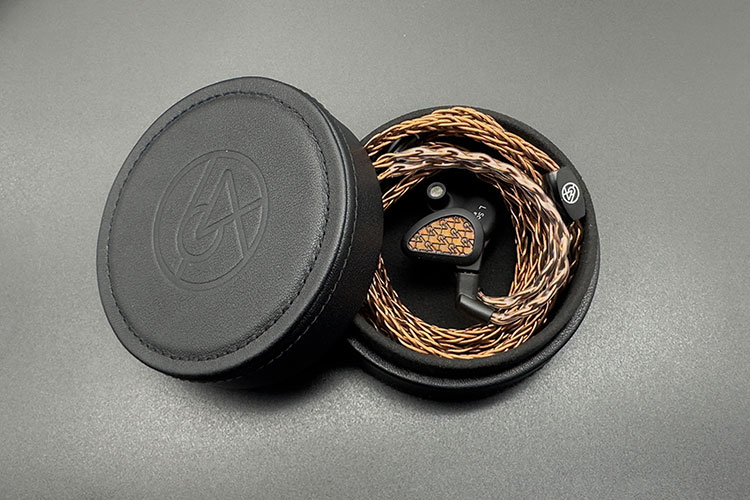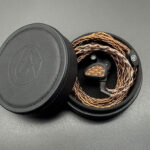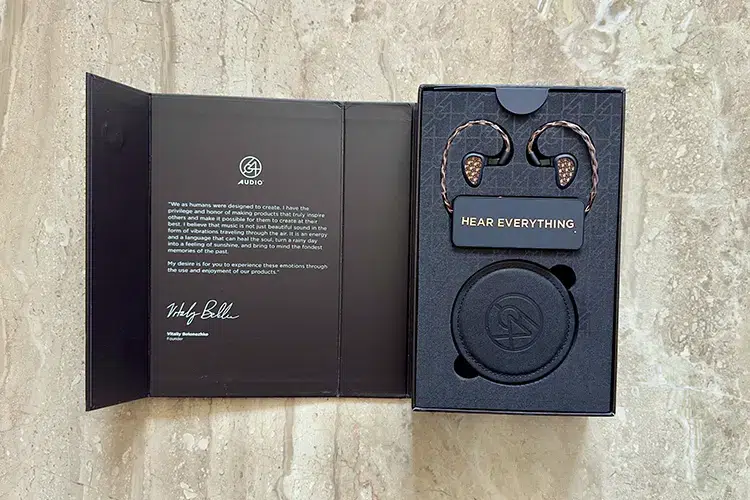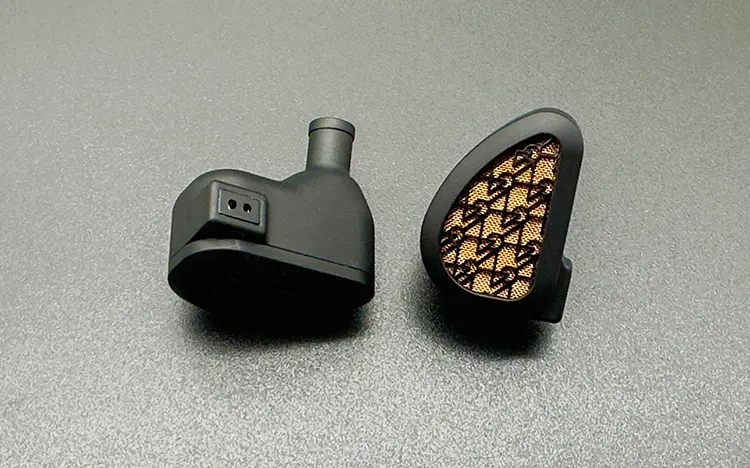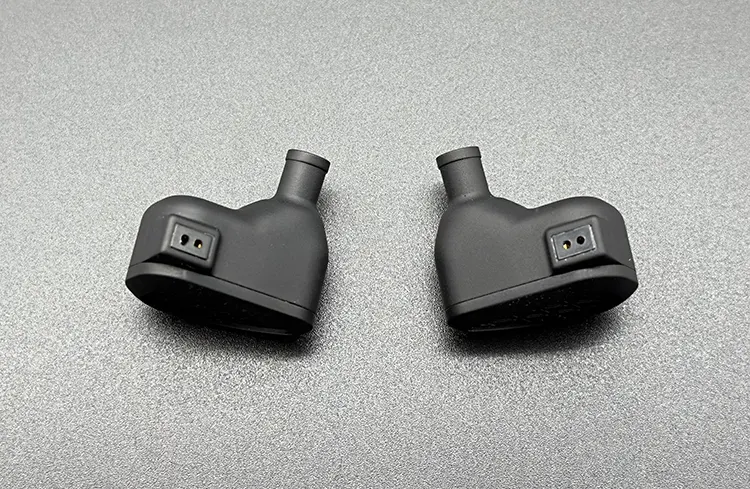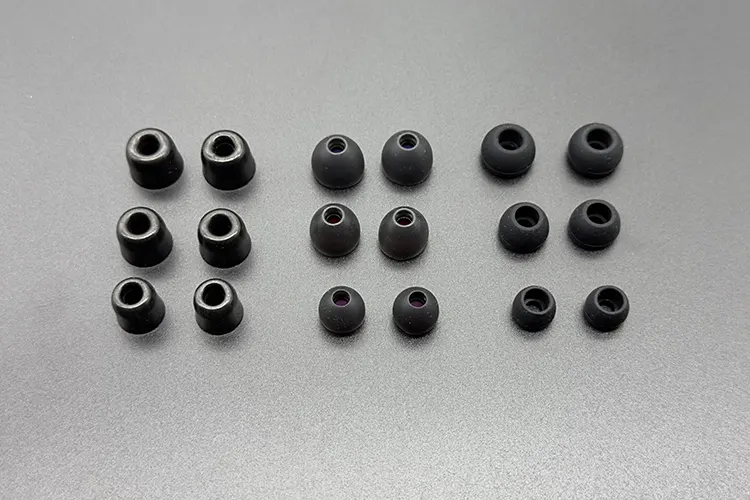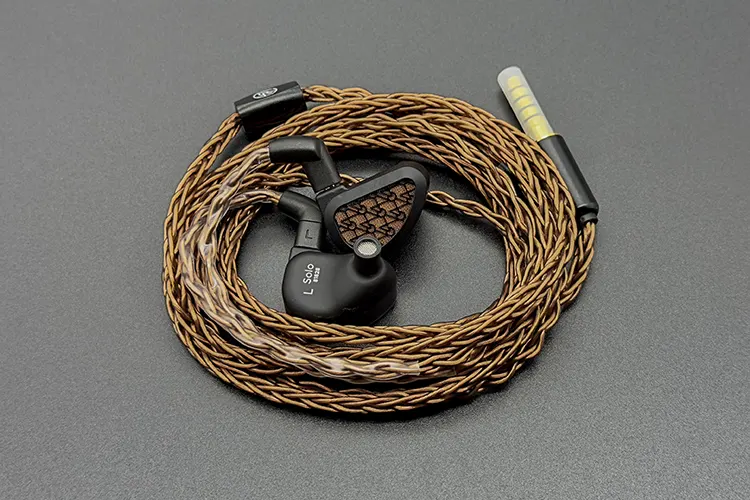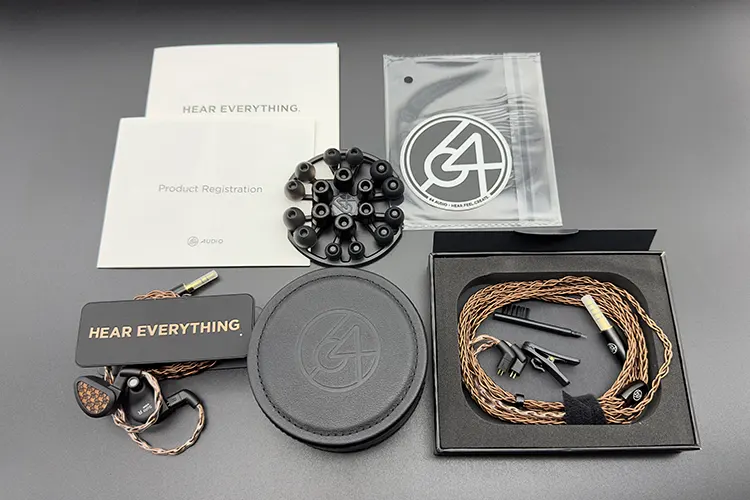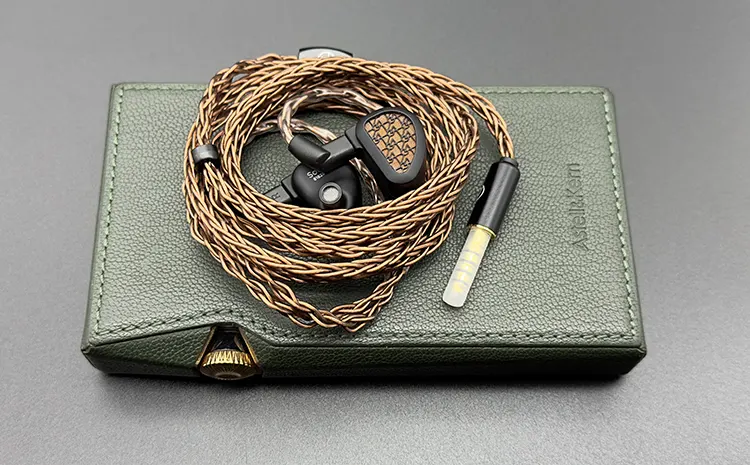In this feature, Nihal reviews the 64 Audio Solo, a new single 14.2mm planar driver universal IEM equipped with tia, apex core, and LID technology. It is priced at $1399.
Disclaimer: The unit sent to me was purchased for this review. Headfonics is an independent website with no affiliate links or status. I thank 64 Audio for their support.
You can click here to learn more about 64 Audio products previously covered on Headfonics.
Note that this article follows our current scoring guidelines, which you can read in more detail here.
The 64 Audio Fourte was my first flagship IEM, which I bought a couple of years ago and still remains the highlight of my collection.
After owning the Fourte for quite some time, I am always excited to see 64 Audio releasing new IEMs. To my surprise, 64 Audio has joined the planar train with their new Solo priced at $1399.
The Solo was released just before CanJam SoCal 2024 and has received positive feedback from many, making it fairly intriguing release.
In this review, I will do a detailed deep dive into what the Solo offers and how it compares with some similar price IEMs such as the FlipEars Artha and the U4s.
Features
The Solo uses a single 14.2mm planar magnetic driver combined with 64 Audio’s signature array of features, including apex Core, Linear Impedance Design (LID), and the Tubeless In-Ear Audio (tia) system.
Solo’s acoustic chamber includes the apex Core technology, which is a pressure-relieving technology that ensures hours of comfortable listening.
The Solo doesn’t have apex modules like those used in the U4S and U12T. Apex-core does vent out of the 3D printed acoustic chamber into the body of the shell which is pneumatically-transparent due to the copper mesh faceplate
LID helps the IEMs remain unaffected by changes in output impedance when you change sources, ensuring consistent and reliable performance.
The tia system controls how the sound travels to the nozzle. The Solo features a partial implementation using a single bore and micro-acoustic chambers to propagate the sound.
To eliminate specific problematic frequencies and provide smoothness to the high-frequency output of the planar driver, 64 Audio incorporates Helmholtz Resonators, inspired by mid-19th-century acoustic principles.
Two 3D-printed micro-cavities in the Solo’s sound chamber force air in and out, causing the air inside to resonate at targeted frequencies. This allows precise control to amplify or diminish specific resonances.
Design
One cannot deny that the Solo is one of the most beautifully designed universal IEMs from the house of 64 Audio.
Most of their IEMs differ in how their faceplates are styled, but this time, they haven’t simply added an abstract design or color to the faceplate.
The faceplate features a copper mesh with an array of 64 Audio logos, giving it a unique and elegant touch that feels thoughtfully crafted. It looks stunning both in pictures and in real life.
The shell is constructed with T6061 Aluminum, an alloy composed of aluminum with magnesium, silicon, and traces of elements like copper, chromium, and iron.
This enhances the durability and the corrosion resistance of the shells. The shells have a grainy finish.
The shape of the shells is similar to many other 64 Audio IEMs. The nozzle is not overly long and leans on the thinner side. A lip has been added to the nozzle, which holds the ear tips more securely than lip-less designs.
Comfort & Isolation
Comfort has never been an issue with most of 64 Audio IEMs, and the Solo is no exception. The shells are small in size. There are no sharp corners or pressure points on the shell, and the lightweight build makes them ideal for long listening sessions.
For me, the fit is nearly flush. When in use, the IEMs do not protrude much, and there’s no need to frequently adjust or push them back in. Even when on the move, they stay securely in place, so you won’t have to worry about them becoming loose.
The nozzles, as with most 64 Audio IEMs, are thin and slightly long, enabling a deep insertion that contributes to a secure fit. The IEMs feature a near-open-back design meaning it is not fully open-back but with isolation leaning toward the open side.
As a result, isolation is reduced, and you can hear some noise from your surroundings. To fully enjoy the music without external disturbances, a quiet environment may be necessary.
During my time with the Solo, I didn’t experience any pressure buildup, which I attribute to its design.
Ear Tips
The Solo has a wide range of ear tips, totaling 9 pairs, with varying sizes to ensure optimal fit for everyone. Among the silicone tips, there are two kinds.
One kind is SpinFit Silicone, characterized by a narrower bore and comes with a colorful stem longer than those of the standard silicone tips. These are dark grey in color.
The other set, which is black in color, has a wider bore and shorter stems. I find the narrow bore tips more suitable for me given the long nozzle of the Solo.
They give a comfortable and snug fit. The wide bore tips have stems smaller than the nozzle of the IEM, which did not give a good fit to me.
And besides it, there are a bunch of TrueFidelity foam tips. In fairness, I am not very fond of these foam tips, so I hadn’t spent much time with them.
I did not get the best fit with the stock tips, so I would recommend one should also try some after-market ear tips as well. I found the SpinFit W1 tips fitting really well. Be mindful; for the best bass response, you need a very good-fitting ear tip.
Stock Cable
People who have had complaints about the cables on 64 Audio IEMs will likely be quite satisfied. The Solo comes bundled with two pure copper cables: one with a 3.5mm termination and the other with a 4.4mm termination.
However, I wonder why they didn’t opt for a modular cable with multiple terminations instead of providing two cables that are essentially the same.
The OCC Copper cable, made from 23 x 25 AWG wires, features an eight-braid design with a pleasant tactile feel and an impressively low 0.26Ω impedance rating.
The cable complements the overall copper color scheme, from the packaging to the grille color on the shells. Not only is this the most aesthetically pleasing cable from the brand, but it also looks and feels better than the cable included with their flagship Fourté.
The cable has a supple build, feels soft, and is flexible to use. It is easy to roll up and store, and it doesn’t tangle when rolled. Additionally, it is lightweight and doesn’t pull or cause discomfort due to its weight during use.
Packaging & Accessories
Solo’s unboxing was quite a surprise. On a few occasions, I have unboxed other 64 Audio IEMs, and they didn’t leave any lasting impression. However, with Solo, the unboxing experience is quite enjoyable. One reason could be the dark brown aesthetics maintained throughout.
It arrives in an average-sized box, which feels rather heavy. The outer sleeve is thick and sturdy, featuring an image of the IEM along with some basic specifications.
On removing the sleeve, you are greeted with a black box featuring the brand’s logo printed in dark brown on the top. The box has a book-style opening lid, where the top swings open on one side while the base remains attached.
Inside the lid, there is a message from the brand accompanied by the owner’s signature. The base contains the IEMs and accessories, placed in a foam cutout. Interestingly, the foam cutout features an array of the brand’s logo throughout, matching the faceplate design of the IEMs.
The shells are neatly tucked into the foam cutout, with the cables coiled around a metallic piece engraved with the phrase “HEAR EVERYTHING” in dark brown. The carry case is positioned just below the IEMs.
The upper foam layer can be removed to carefully push out the shells. I suggest not pulling them out using the cable or nails.
Removing the upper foam layer reveals a small box containing a cleaning cloth and some cards featuring product pictures and warranty information, and the second IEM cable, neatly rolled. The carry case houses the ear tips, arranged neatly on a symmetrically designed circular holder.
Carry Case
The carry case included with the Solo is a round, puck-style case crafted from black simulated leather. It is made of hard material, providing a very durable build that can easily withstand pressure, making it ideal for use as a storage case.
The interior is lined with soft felt, offering a comfortable and protective space to store the IEMs. The stitching on the outer part is clean and even. The case features a 64 Audio logo on the exterior, adding a touch of elegance.
However, due to its rather large size, it may not fit in a pocket. While the space inside is decent, I would have preferred a bit more, as it feels slightly cramped.
Sound Impressions
The following sound impressions of the 64 Audio Solo were completed using a mixture of my main source, Lotoo’s Paw Gold Touch, and occasionally the Astell&Kern SP3000 and the Questyle CMA18P. I paired the IEMs with stock cable and the SpinFit W1 ear tips.
Summary
Solo combines the finest aspects of the planar world with its own unique characteristics. Treble has often been a weakness for many planar IEMs, but 64 Audio does an impressive job of addressing and resolving these treble issues.
The sound it offers has a good level of bass, a clean and detailed midrange and a nicely extended treble, which does not feel too sharp or relaxed. The clarity of instruments is excellent.
The inclusion of various technologies makes it a technically strong IEM. Make sure you visit the pairing section to see how the sound changes its character across different sources.
Bass
The Solo has satisfying bass with both good quantity and quality. The bass maintains its texture and layers across tracks.
At higher volumes, it scales well and does not lose its texture or control, showcasing its decent character. The bass’s characteristics are more akin to those of a dynamic driver, offering a nice decay and a lingering effect rather than dissipating quickly.
The bass does not lean particularly toward sub-bass or mid-bass but instead maintains a nice balance. While the bass is quite enjoyable, I miss a strong impact, mostly due to the way the sub-bass behaves.
The sub-bass could use a bit more rumble. There is enough presence in the mid-bass and sub-bass, but it lacks the hard-hitting characteristics, creating a bit of looseness around the edges.
Overall, I enjoy the bass quite a lot, though I do miss some tightness. For most listeners, however, the bass response of the Solo should be more than adequate if you have a nice fit. Importantly, the bass is well-balanced and does not overshadow the upper frequencies.
Midrange
The Solo exhibits a clean and well-detailed midrange. I do not find the midrange dry or lacking in emotion. There is a naturalness to the sound. The midrange is forward, especially the vocals, with instruments nicely placed around them on the stage.
Despite a good level of bass, the transition into the midrange is quite seamless. While the bass does not overshadow the midrange, the lower midrange lacks some density and lushness.
I found it a bit lacking, as male vocals can sometimes come across as slightly thin, missing some nuances. I also feel that a bit more warmth could be really beneficial.
Moving to the upper midrange, things start thinning out. Female vocals and the trails of midrange notes lack the necessary density, which occasionally makes the upper midrange sound thin and sharp.
This is where a bit more warmth and some lushness in the midrange would have really helped. With few sources, I feel the Solo exudes extra or unwanted energy in the upper midrange. It is also a bit unforgiving with poorly recorded tracks.
Overall, while there is richness and an appealing tonality to the midrange, I feel it misses a rich, dense texture that could have elevated the experience, especially since there is already a decent, non-intrusive bass shelf.
Treble
Treble has not been much of an issue with planars, but most of them miss out on a properly tuned treble. This is where 64 Audio has done a good job with the Solo.
The Helmholtz resonators help it achieve a smoothened treble response that does not feel exaggerated, yet not too laid-back either. I also feel the problematic planar timbre found in many planar IEMs is significantly minimized on the Solo.
In complex tracks where notes mix into each other, the Solo does a great job of bringing out the details. The notes have a nice decay and do not disperse quickly.
There is plenty of air and sparkle, and you get all the details from the treble region. The treble feels controlled, with enough energy, without any sense of sharpness or sibilance.
Staging & Dynamics
The Solo performs well on most technical parameters, though it is not exceptional. The soundstage offers decent width and good depth.
The presentation could be a touch more spacious, as I felt it was closer to my ears rather than a far and wide stretched-out stage. There is less focus on the width, but I can’t really complain, as it still leaves me satisfied.
The imaging and layering aspects are quite nicely executed, with the Solo accurately positioning the instruments and providing a good sense of spatiality in their arrangement and placement on the stage.
Even in complex tracks, one will find it easy to identify layers of instruments and their positions without any sense of overlapping. There is enough breathing space for the instruments within the soundstage.
The Solo achieves a decent level of resolution and detailing, excelling at bringing out micro-details and finer nuances effortlessly.
Click on page 2 below for my recommended pairings and selected comparisons.




